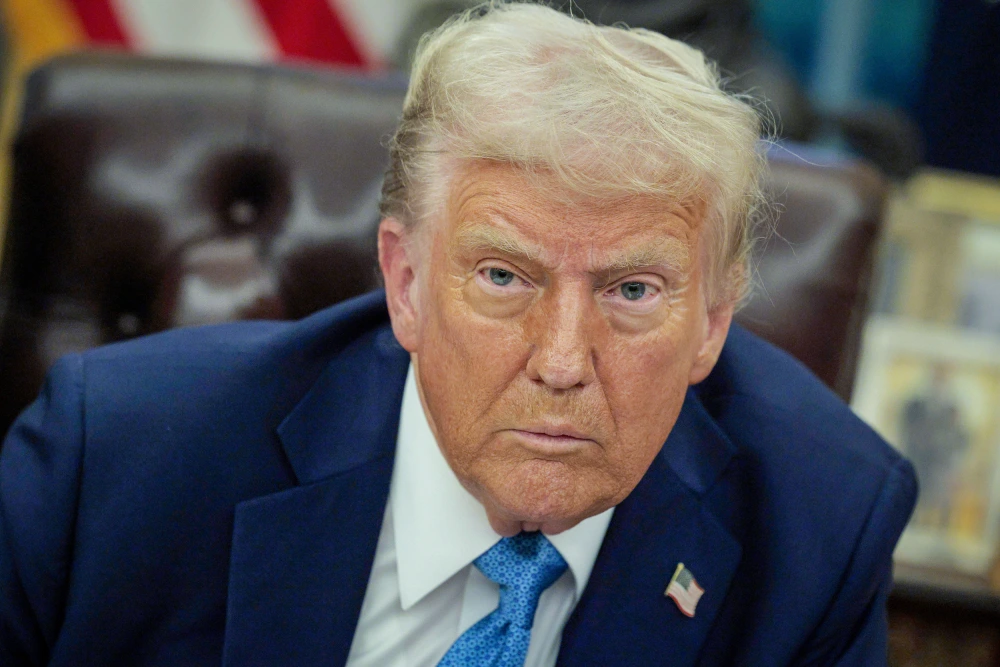President Donald Trump has frequently discussed the idea of imposing tariffs, both during his campaign and after taking office. The first set of tariffs, affecting goods from Canada, China, and Mexico, is set to go into effect on February 1, the White House confirmed on Friday.
Though some details remain uncertain, economists agree on one thing: U.S. consumers should prepare for negative financial consequences.
“It’s hard to find positives” in tariffs, said Mary Lovely, a senior fellow at the Peterson Institute for International Economics, whose research focuses on U.S.-China trade and global supply chains.
Trump intends to impose a 25% tariff on goods from Mexico and Canada, and a 10% tariff on those from China, according to White House Press Secretary Karoline Leavitt.
China, Mexico, and Canada are the U.S.’s top three trading partners by import volume. In 2022, they supplied $536 billion, $455 billion, and $437 billion in goods to the U.S., respectively, according to the Office of the U.S. Trade Representative.

Tariffs are essentially taxes on imported goods, paid by U.S. businesses that bring in foreign products.
Many of these businesses are likely to pass those additional costs onto consumers—either directly or indirectly—leading to higher prices, economists explain.
“Part of these tariffs will be passed on to consumers,” said Mary Lovely.
Americans may also notice fewer options for brands and products on store shelves, she added.
Exemptions Could ‘Limit the Damage’ to Consumers
There are still several uncertainties surrounding the upcoming tariffs on Canada, China, and Mexico.
For instance, it’s unclear whether any imports will be exempt. Trump suggested Thursday that Canadian oil might be excluded, and the White House announced that the tariff details would be available for public inspection on Saturday.
Discussions about these specifics are still “ongoing,” a White House official told CNBC on Friday.
“There are always exemptions and carve-outs,” said Mark Zandi, chief economist at Moody’s.
Trump may use these exemptions to “limit the damage to the U.S. consumer,” Zandi said. For example, he could decide not to impose tariffs on products like Chinese apparel, Mexican avocados, or Quebec cheese.
Economic impact
The White House has argued that tariffs, along with Trump’s broader economic agenda, will ultimately benefit the U.S. economy.
White House spokesperson Kush Desai stated that the tariffs imposed during Trump’s first term, combined with tax cuts, deregulation, and energy policies, led to “historic job, wage, and investment growth with no inflation.” He added that in a second term, Trump would use tariffs to “usher in a new era of growth and prosperity for American industry and workers.”
However, economists are not on the same page.
The Committee for a Responsible Federal Budget estimated that a 25% tariff on goods from Canada and Mexico, along with a 10% tariff on China, could generate roughly $1.3 trillion in revenue through 2035. This revenue might help offset the cost of tax cuts, which could total more than $5 trillion over the next decade.
On the other hand, an analysis by economists Warwick McKibbin and Marcus Noland from the Peterson Institute for International Economics suggests that a 10% tariff on China could reduce the U.S. economy by $55 billion in the Trump administration’s second term, assuming China retaliates with tariffs of its own. They also found that a 25% tariff on Mexico and Canada could result in a $200 billion drop in U.S. GDP.
Economists also expect further tariffs in the future. During his campaign, Trump floated ideas for a 10% or 20% universal tariff on all imports, along with a tariff of at least 60% on Chinese goods.
A 20% global tariff and a 60% levy on Chinese goods could increase costs by $3,000 for the average U.S. household in 2025, according to an October analysis from the Tax Policy Center.
“Broad-based, universal tariffs and the damage they will cause is not really up for debate,” said Mark Zandi. “They will cause harm. The only question is how much and to whom.”
How Tariffs Could Affect Consumers
Economists say consumers could feel the impact of tariffs both directly and indirectly.
Tariffs on China are likely to have the most immediate effect, as China is a major exporter of consumer goods like clothing, toys, and electronics, Zandi explained. China is the leading supplier of toys and sports equipment to the U.S., and it provides 40% of the nation’s footwear imports and 25% of its electronics and textiles, according to a recent analysis by PIIE economists.
Tariffs on Mexico and Canada would likely lead to higher food prices, as these countries are key suppliers of vegetables (47% of U.S. imports) and prepared foodstuffs (42%), PIIE economists found. Other sectors, such as transportation equipment, machinery, electronics, and fuel, could also face higher prices.
“If oil is hit with tariffs, it could affect energy markets and push up costs for businesses and consumers,” said Nigel Green, CEO of deVere Group, a financial consulting firm. Canada is the dominant supplier of crude oil to the U.S., which imports about 40% of its oil.
While some U.S. manufacturers and industries could see short-term benefits from less foreign competition, Green added, the overall impact could raise costs for consumers.
Indirectly, U.S. producers might raise their prices due to less competition for certain goods, said Lydia Cox, an assistant professor of economics at the University of Wisconsin-Madison. Additionally, U.S. companies that rely on imported goods to manufacture products might also increase prices for finished goods. For example, steel tariffs could lead to higher prices for cars, machinery, and other steel-dependent products.
Tariffs Could Cause ‘Collateral Damage’
There’s also the risk of retaliatory tariffs from other countries, which could spark a trade war and result in U.S. producers losing sales abroad, Cox said.
“Unlike Canada and Mexico, for which retaliation would be unlikely, China has retaliated in the past and would likely do so again,” wrote PIIE economists in a recent analysis.
Moreover, tariffs may unintentionally lead to job losses, economists warned.
“The idea that tariffs create jobs in the U.S. is vastly overstated,” said Mary Lovely, a senior fellow at PIIE.
For example, there are 80 workers in industries that use steel for every one job that produces steel, Cox found in a recent study.
Tariffs often create “a lot of collateral damage,” Cox said, which is why economists generally advise against their widespread use.

